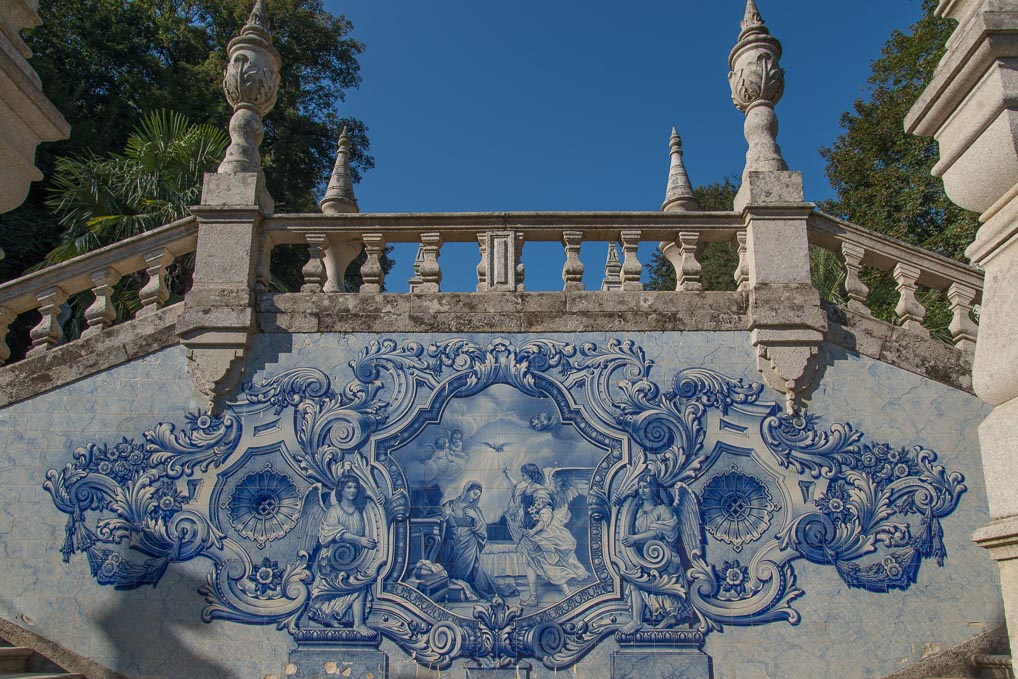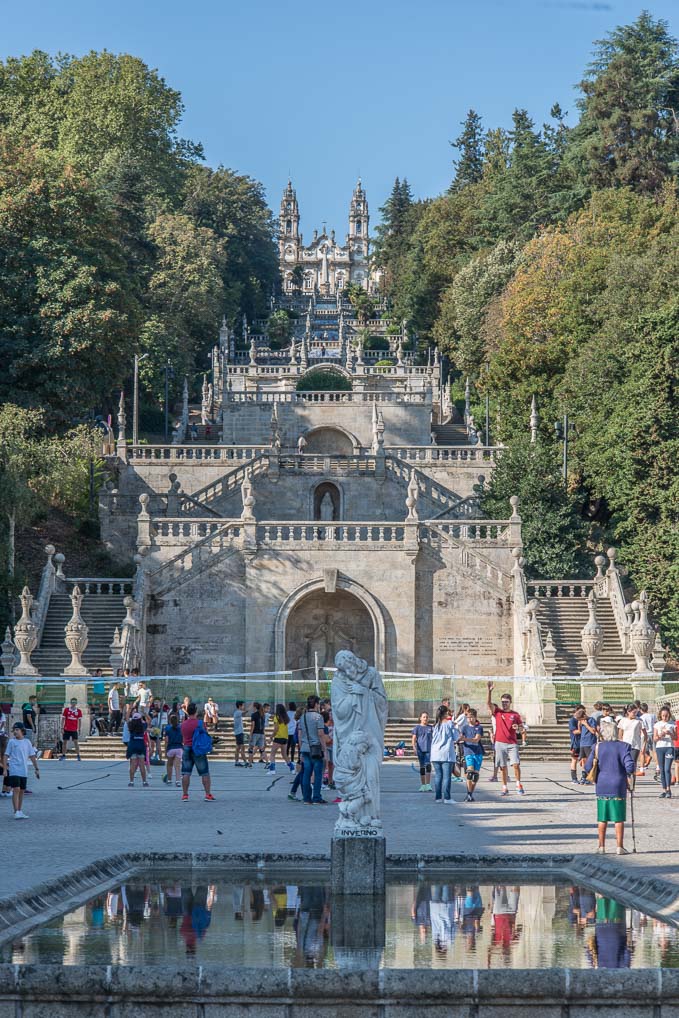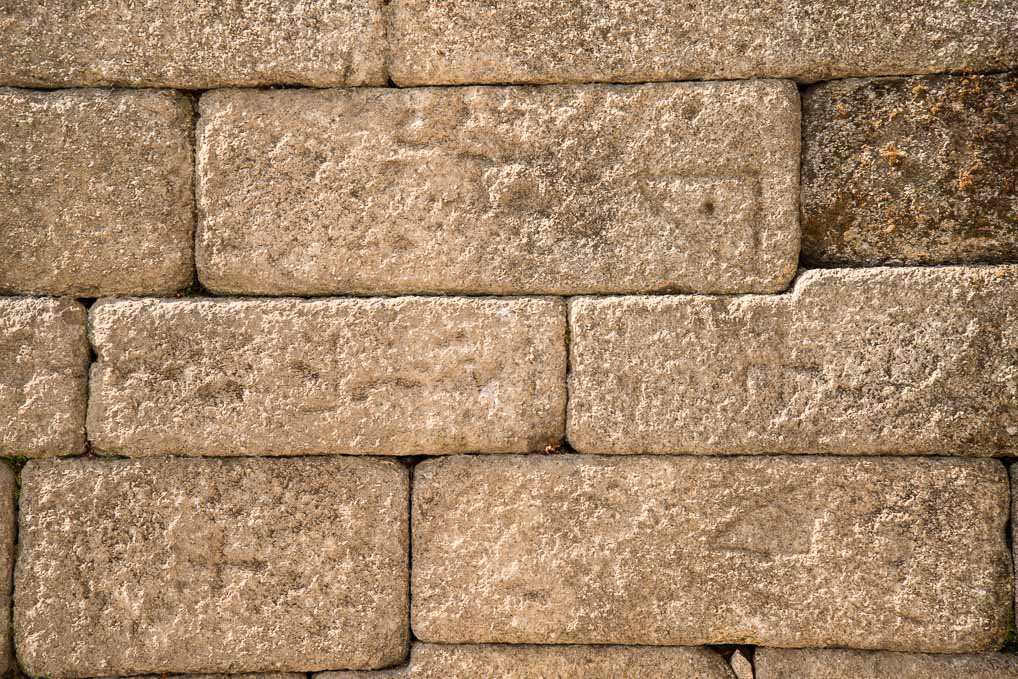Yes, today Sarah, the dogs and I first descended and then climbed the closest thing we are ever going to see to a stairway to heaven. That may be a bit unfair of me to make assumptions about the dogs’ chances with the Big Man, but given the number of religious buildings Melek has cocked his leg on, I think we can be fairly confident he’s going to the other place!
We are in Lamego, a charming little town about 12 km north of the Douro river and the birthplace of Portugal. What, you’re thinking, I though you told us Guimaraes was the birthplace of Portugal. Well apparently there is more than one claimant. In 1143 a council of clergy and aristocrats met in Lamego and approved Alphonso Henriques as Portugal’s first King. That’s the same Alphonso Henriques who was born in Guimaraes and who made Guimaraes his capital. All most confusing and don’t hold your breath, we’ve still got two more stops in Portugal so we may well find more places which gave birth to the nation.

Santuario de Nossa Senhora dos Remedios
Our campsite/aire is on top of a hill overlooking Lamego and only a five minute walk away is the Santuario de Nossa Senhora dos Remedios which even I can translate as something like “the Sanctuary of our Lady of Remedies”. It’s a splendid gothic church whose interior Sarah liked rather more than I did. It’s claim to fame though is that to get to the church, unless you are staying next to it like us, you need to climb 600 steps, arrow straight, from the centre of Lamego. Rather horrifically, in order to get the benefit of the remedies bestowed by Our Lady, women with cancer and other serious illnesses must climb all 600 steps on their knees and then, still kneeling down, shuffle around the circumference of the church! The lady in the tourist office confirmed that women still do this and many without any padding on their knees.

Tiles on the Stairway
We started fairly early to avoid the worst of the heat (another 30 degrees plus) by visiting the church and then walking down the staircase, which contains various chapels, sculptures and beautiful tilework, at stages up, or in our case down, its length.

Stairway to Heaven?
After reaching the bottom we explored the old town, which was small but perfectly formed and as usual built on another blessed hill, crowned with a 12thcentury castle. Rather more uniquely there is a large cistern, which in days of old supplied the castle and the town. Unusually it is possible to explore the inside of the cistern, which only now contains a small amount of water. Most of the cistern is built from huge stone blocks many of which are marked with inscriptions denoting the mason responsible for cutting that particular stone.

Inside the cistern

The cistern external stones. Note the masons’ marks.
The cathedral had a pleasing if plain front and the rest of the old town made for a pleasant wander. But note, Sarah has marked Lamego as her favourite stop of our tour to date.

The Cathedral
The tour was completed with our ascension, in the heat of the day, of, what Sarah counted as, 606 steps back up the sanctuary and Basil. If you want to explore Lamego make sure you bring your climbing muscles with you!

Door of the day
The Tourist Office had mentioned to me that we had a winery, which was open to visitors, next to our campsite. I don’t need a second invitation, so after a short break I headed only 100 metres of so to the Reposeira winery. For €2.50 I, and two Canadians, got a short tour of the winery’s cellars and an explanation that they are Portugal’s largest producer of sparkling wine. All of it is produced by the Champagne method, but in addition to, and sometimes instead of, the standard grapes used on Champagne they use about 16 Portuguese varieties, none of which I had ever heard of. It’s not plonk, even if few people outside of Portugal have heard of it. Their latest vintages have won a silver and bronze medal in the International Wine Challenge, which I believe is the world’s largest awards based on blind tasting.
The tour was rounded off with a complementary glass of our choice and I then could not resist buying a few bottles. Only so Sarah could have a taste, of course!
